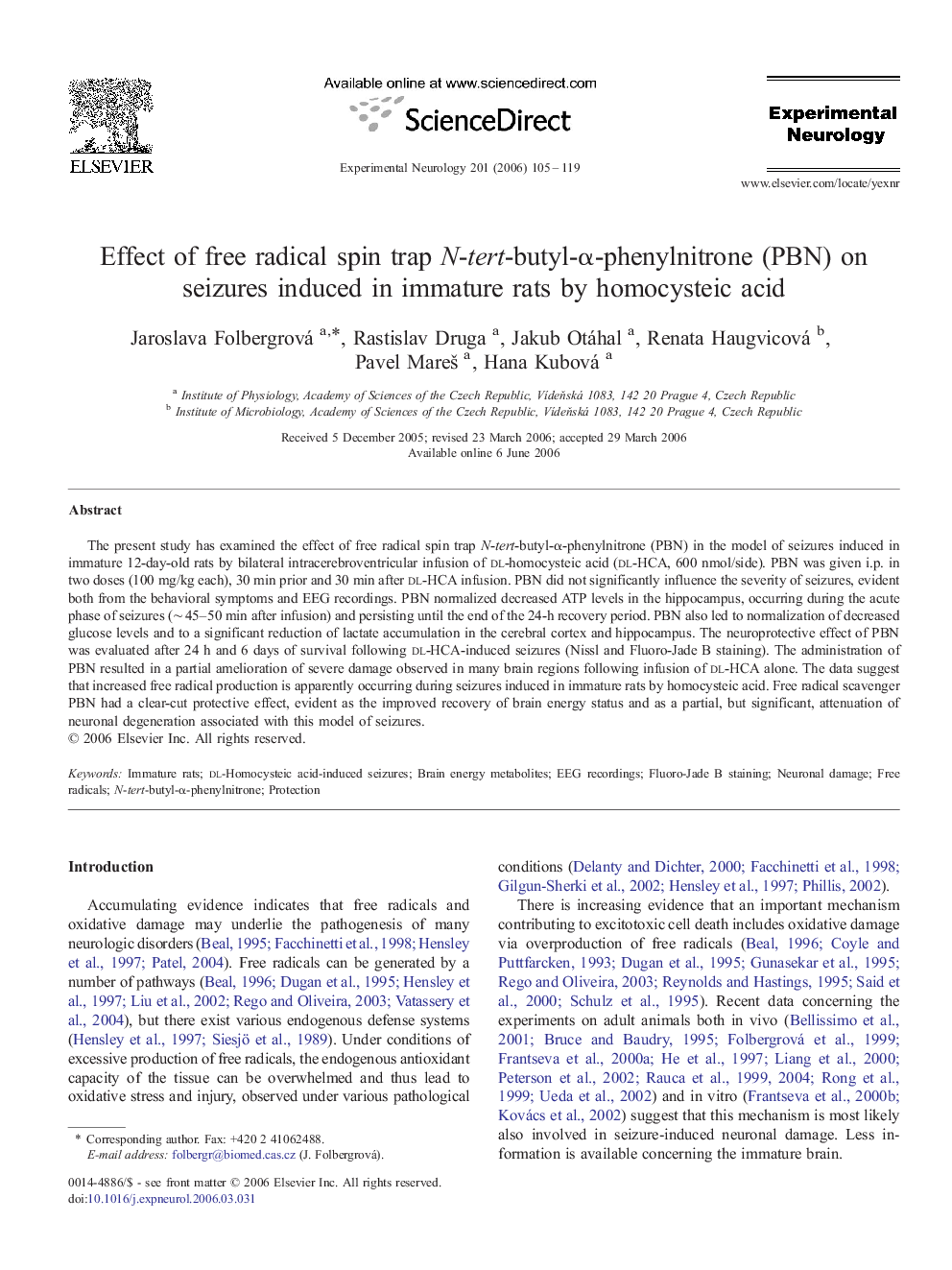| Article ID | Journal | Published Year | Pages | File Type |
|---|---|---|---|---|
| 3057359 | Experimental Neurology | 2006 | 15 Pages |
The present study has examined the effect of free radical spin trap N-tert-butyl-α-phenylnitrone (PBN) in the model of seizures induced in immature 12-day-old rats by bilateral intracerebroventricular infusion of dl-homocysteic acid (dl-HCA, 600 nmol/side). PBN was given i.p. in two doses (100 mg/kg each), 30 min prior and 30 min after dl-HCA infusion. PBN did not significantly influence the severity of seizures, evident both from the behavioral symptoms and EEG recordings. PBN normalized decreased ATP levels in the hippocampus, occurring during the acute phase of seizures (∼ 45 – 50 min after infusion) and persisting until the end of the 24-h recovery period. PBN also led to normalization of decreased glucose levels and to a significant reduction of lactate accumulation in the cerebral cortex and hippocampus. The neuroprotective effect of PBN was evaluated after 24 h and 6 days of survival following dl-HCA-induced seizures (Nissl and Fluoro-Jade B staining). The administration of PBN resulted in a partial amelioration of severe damage observed in many brain regions following infusion of dl-HCA alone. The data suggest that increased free radical production is apparently occurring during seizures induced in immature rats by homocysteic acid. Free radical scavenger PBN had a clear-cut protective effect, evident as the improved recovery of brain energy status and as a partial, but significant, attenuation of neuronal degeneration associated with this model of seizures.
